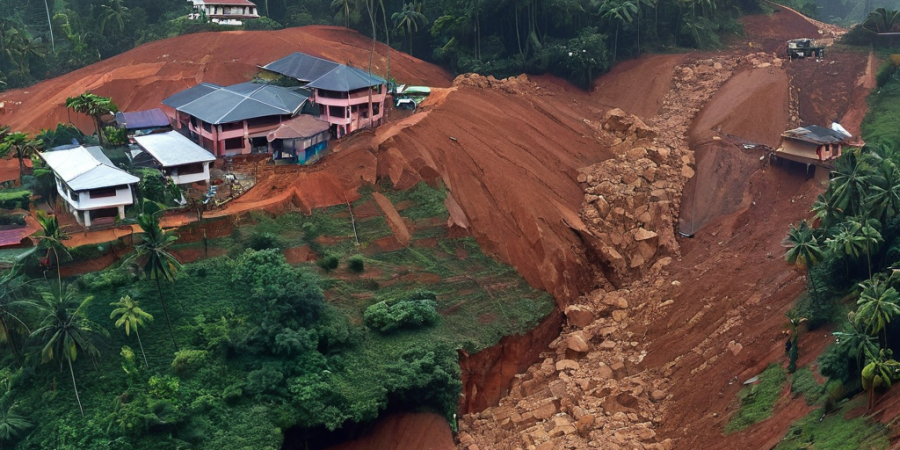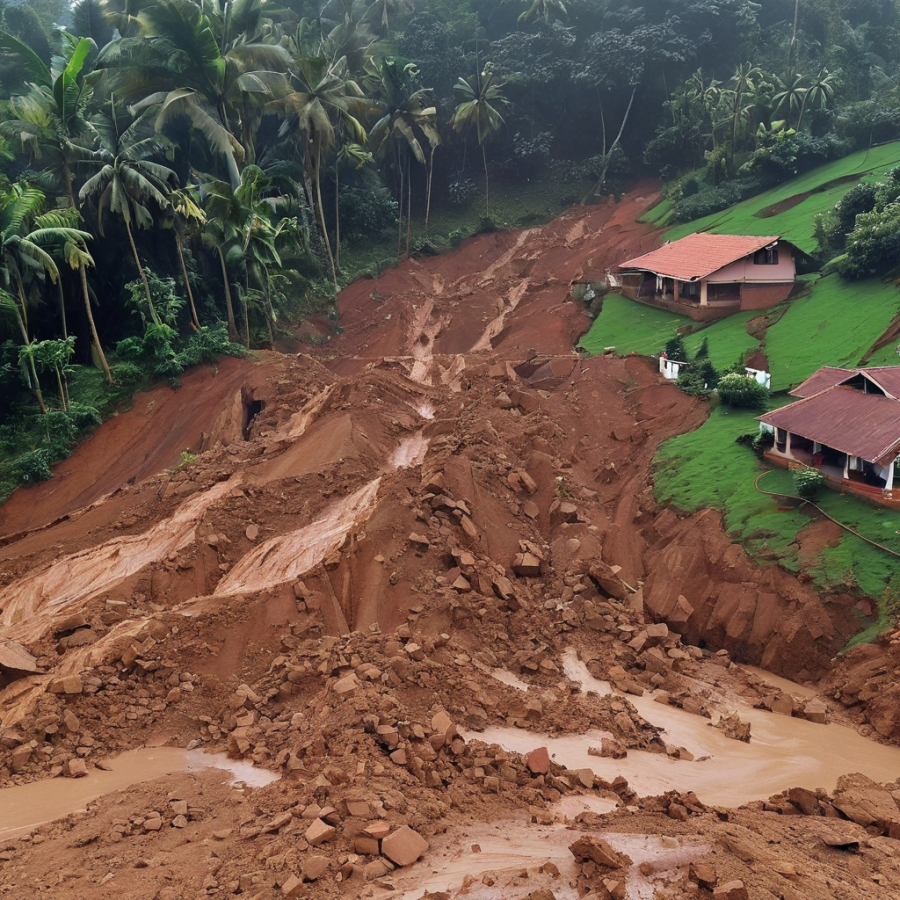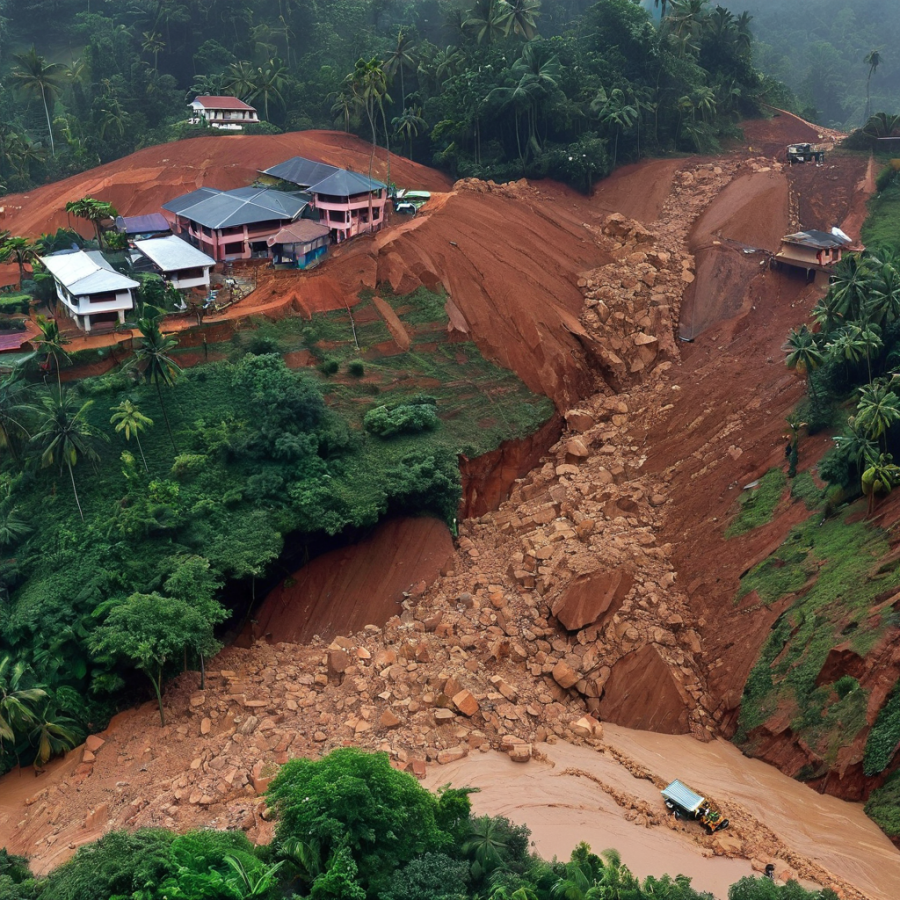

Wayanad landslide 2024:
*Date:* July 2024
*Location:* Wayanad, Kerala, India
*Incident:* Devastating landslide triggered by heavy rainfall
*Impact:*
- *Loss of life:* Over 150 reported deaths
- *Missing persons:* Hundreds still unaccounted for
- *Displacement:* Thousands affected, with many rendered homeless
- *Property damage:* Widespread destruction of homes, roads, and infrastructure
*Response:*
- *Rescue operations:* Ongoing, with multiple agencies involved
- *Relief efforts:* Governments, NGOs, and communities providing aid and support
*Cause:*
- *Heavy rainfall:* Excessive rainfall led to soil erosion and landslide
Note: The information provided is based on available data and may not be comprehensive or up-to-date.

A landslide is a natural disaster that occurs when rock, soil, or debris moves down a slope, often suddenly and unexpectedly. Landslides can be caused by a combination of factors, including:
1. *Heavy rainfall*: Prolonged or intense rainfall can saturate the soil, making it unstable.
2. *Earthquakes*: Seismic activity can trigger landslides by shaking the ground.
3. *Volcanic activity*: Volcanic eruptions can alter the terrain, leading to landslides.
4. *Human activities*: Deforestation, mining, construction, and other human activities can destabilize slopes.
5. *Geology*: Weak or fractured rock formations can be prone to landslides.

Types of landslides:
1. *Rockfalls*: Sudden release of rock from a cliff or slope.
2. *Debris flows*: Fast-moving mixtures of water and sediment.
3. *Mudslides*: Flows of mud and water.
4. *Slumps*: Rotational movement of rock or soil along a curved surface.
5. *Creep*: Slow, gradual movement of soil or rock.
Landslides can have devastating consequences, including:
1. *Loss of life*
2. *Property damage*
3. *Infrastructure disruption*
4. *Environmental impact*
It's essential to be aware of landslide risks and take preventive measures, such as monitoring weather conditions, maintaining soil stability, and avoiding areas prone to landslides.

I don't have personal opinions, but I can provide an analysis of the Gadgil Report.
The Gadgil Report, also known as the Western Ghats Ecology Expert Panel (WGEEP) report, was submitted in 2011 by a panel led by ecologist Madhav Gadgil. The report aimed to conserve the Western Ghats, a biodiversity hotspot in India.
Key recommendations:
1. _Ecological sensitivity_: Classified areas into three zones based on ecological sensitivity.
2. _Protected areas_: Suggested expanding protected areas, like national parks and wildlife sanctuaries.
3. _Regulated development_: Recommended regulating development activities, like mining and construction, in sensitive zones.
4. _Community involvement_: Emphasized involving local communities in conservation efforts.
Pros:
1. _Comprehensive approach_: Addressed ecological, social, and economic aspects of conservation.
2. _Scientific basis_: Based on extensive research and data analysis.
3. _Community-centric_: Recognized the importance of local communities in conservation.
Cons:
1. _Implementation challenges_: Faced opposition from various stakeholders, including governments and industries.
2. _Economic concerns_: Raised concerns about potential economic impacts on development activities.
3. _Political will_: Required strong political will for implementation, which was lacking.
Overall, the Gadgil Report was a pioneering effort to conserve the Western Ghats, but its implementation faced significant challenges. Its recommendations remain relevant for sustainable development and conservation in the region.




